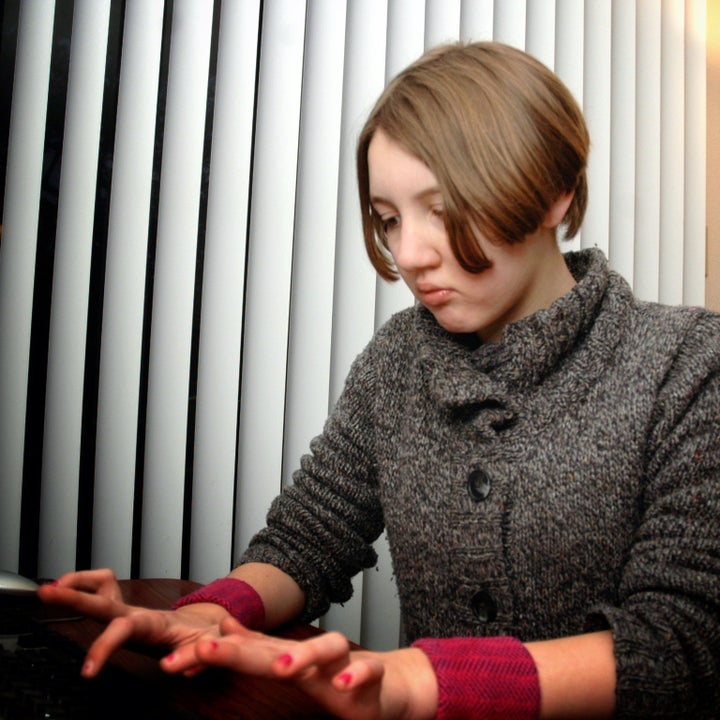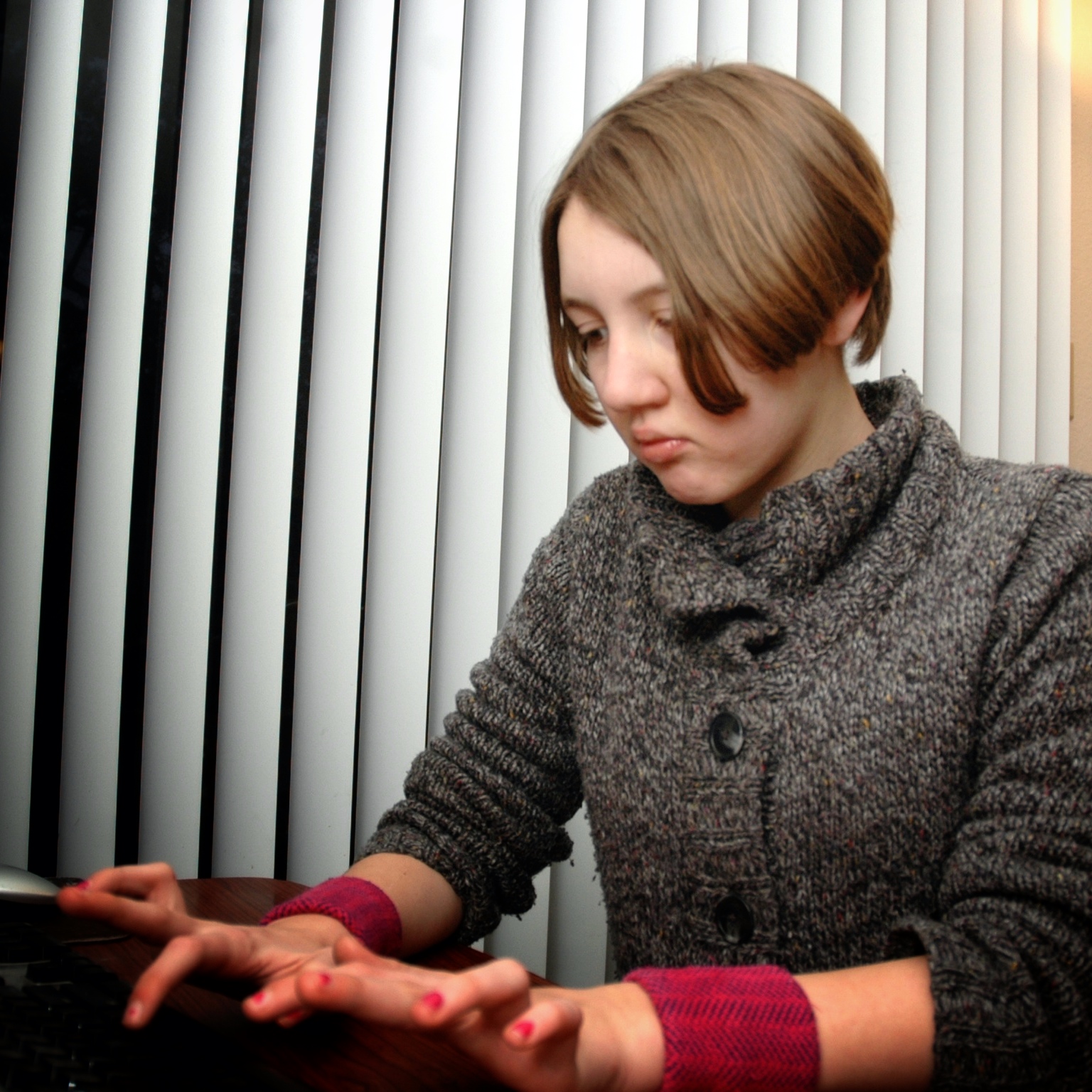
By Robert Rummel-Hudson
National Public Radio recently broadcast a story about Samantha Grimaldo, a 17-year-old girl with Perisylvian syndrome, another name for the same neurological disorder that my daughter Schuyler was born with. The similarities don't end there; indeed, as my wife pointed out, Schuyler and Samantha even look eerily alike. But it is in the manifestation of their disorder where they have the most in common.
Samantha Grimaldo is unable to speak, at least in a manner that is generally understandable. To communicate, she uses speech technology very similar to Schuyler's. For years, they actually used the same dedicated speech device; my daughter recognized it immediately in the photo. Now, like Schuyler, she uses an iPad to produce spoken language.
And like Schuyler, she doesn't like using the voice if she can avoid doing so.
Many of their reasons are similar. In the interview, Samantha describes the voice as "weird" and "older." Schuyler has often said that using her speech device causes other people to look at her strangely. Samantha and Schuyler are self-conscious about using their speech devices. Both teenaged girls have difficulty squaring the alien voices that emerge from their technological helpers with their own sense of identity.
It's one of the dirty secrets of assistive voice technology. There are a million good reasons to use it, and the innovations advance remarkably every day. But as one noted assistive tech innovator pointed out to me as we sat in an exhibition hall full of the latest technology, "Every piece of assistive tech equipment in this room says the same thing to the casual observer. It says 'I have a disability.'"
Implementation of assistive tech can be thwarted by the most basic and heartbreaking of obstacles: the desire to be like everyone else.
The NPR story follows Northeastern University speech scientist Rupal Patel as she works to develop an electronic voice to replace the generic ones on Samantha's iPad, a new voice based on the actual sounds that Samantha produces naturally. The voices that currently exist are actually pretty diverse. If you're imagining the sound of Stephen Hawking's electronic voice or the computer that gives you the time and temperature over the phone, you might be surprised at what's out there. But the fact remains that no matter which voice modules Samantha or Schuyler select, they're not their own. And they know it.
It might seem like a simple thing. It is perhaps the simplest of issues in the complex world of synthetic speech prosthesis. But for users, particularly those who can hear the pitch and tone of their own voices but are unable to produce usable speech, it is a frustrating and deeply personal issue.
One morning a few years ago, Schuyler pulled me aside and told me that she wanted to change the voice on her speech device. "I want big girl voice," she said in her device's vaguely robotic child's voice. And so we spent the better part of an hour going through the choices available to her, picking one and then tweaking the pitch and the speed with which it spoke. Meticulously, carefully and with much consideration, we found what was going to pass for her voice.
One day, I hope she finds it for real.
